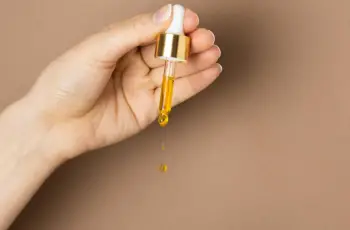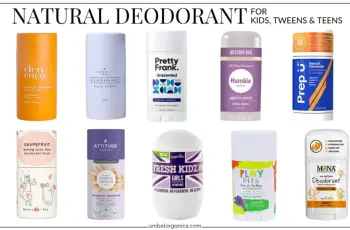
We love retinol and it really delivers on its promises. The downside is that, while it’s effective, it can make your skin look worse for a short period of time before it gets better. If you’re not sure what I’m talking about, this is a common side effect that happens when you first introduce retinol into your routine. The skin starts to get dry, red, flaky, and feel tight, itchy, and uncomfortable.
This happens to anyone using retinol for the first time, but I know you want to avoid it, and that’s what we’re going to talk about in today’s blog post. So if you want to learn more about what you can put on your skin to improve your skin while you’re waiting for retinol to work, stay tuned.
Don’t forget, The Beauty Insiders has a series of blog posts about retinol if you want to learn more about retinol and how it works.
How can I increase the effectiveness of retinol?
The best way to increase the effectiveness of retinol is to apply it to your skin properly. Many people often feel like they need to use retinol more often to get quick results. The problem is that retinol doesn’t like to be rushed. To reap the benefits of this powerful product, slowly introduce it into your daily routine. If you are new to retinol and have not yet incorporated it into your daily routine, here is an example of the most effective way to incorporate it into your routine.
Start by applying retinol to your skin once a week.
Once your skin has developed some tolerance, you can increase the frequency of applications to twice a week. You can then increase it to up to three applications per week.
Always use retinol products at night, as they lose their effectiveness when exposed to the sun.
After using retinol products, use a serum or moisturizer that contains hydrating ingredients like hyaluronic acid to counteract the drying effects of retinol.
Granted, it takes a lot of patience and time to use retinol optimally, but if you follow my advice, you will be amazed at the results.
How do I prepare my skin for retinol?
As I mentioned before, the way you use retinol affects how it works on your skin. I will now tell you the best routine to follow when incorporating retinol into your skincare routine. This is just an example. Everyone has different skin. Therefore, if you are concerned about incorporating retinol into your daily routine, you should seek the advice of your doctor or dermatologist to avoid severe irritation and reactions.
Step 1: Make sure the skin is clean and free of makeup or other skincare products.
Step 2: Wait until the skin is completely dry before applying a retinol product. This is important because applying retinol to damp skin can cause it to penetrate too deeply into the skin and lead to increased irritation.
Step 3: Apply a pea-sized amount of retinol to your face and work it into the skin using circular motions.
Step 4: Once the retinol has been absorbed, follow up with a moisturizer that contains hydrating ingredients.
Step 5: Always apply a daily SPF of 30 or higher in the morning to protect the skin from the sun. Do this every day, even if it is cloudy or raining.
How long does it take for the skin to adjust to retinol?
You can expect that it will take about three weeks for the skin to adjust to retinol. You will also notice that she has also developed some tolerance to the retinoic acid during this time. In the early stages of using retinol, you will experience some degree of irritation, redness, peeling, and flaking. These side effects are often referred to as retinol ugly (more on that later!), and they don’t usually last more than three to four weeks. If you find that they last for a long time, you may want to switch to a formula with a lower retinol percentage. However, if side effects persist, you must stop using the retinol product and consult a doctor or healthcare professional.
Should hyaluronic acid be used before retinol?
Yes, you can. This is considered a good idea to keep the skin’s protective barrier strong and protect it from free radicals (such as Protects against UV rays, pollution, and other environmental aggressors that can cause long-term damage to your skin. You’ll also find that hyaluronic acid acts as a humectant, drawing moisture to and locking it on the skin’s surface, counteracting the drying effects of retinol.
If you want to learn more about using hyaluronic acid and retinol together, there’s a dedicated blog post that goes into more detail on how to use these powerful substances together.
Can you layer a serum over retinol?
Yes, absolutely, but remember that it’s best to avoid serums with ingredients that increase skin irritation. Avoid serums with salicylic acid, glycolic acid, or other chemical peels.
I mentioned the basic skin rules in a previous blog post, but you’ll need to use them on a daily basis. Consider it in your regular skin care routine. To get the benefits of the active ingredients in different formulas, you should apply the products in the thinnest to thickest consistency. This prevents a physical barrier from forming on the skin and prevents the active ingredients from penetrating the different layers of the skin.
What is Retinol Ugly?
Retinol Ugly is the name given to the common side effects that occur when you first introduce retinol into your skincare routine. These symptoms vary, from redness, flaking, and rashes to itchy and flaking areas of skin. Every retinol user experiences these side effects to some degree, and they usually only last three to four weeks at most.
Here’s more information on how to improve your skin while you’re waiting for retinol to work. If you have any other skin care questions, follow us on Instagram. You can reach me in private messages!


